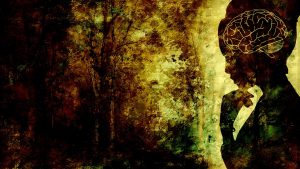Every novelist struggles with ways of creating three-dimensional characters. Heroes and heroines who are too heroic become predictable and boring. The same for villains who are always evil. Personal quirks, foibles and idiosyncrasies are what make characters memorable. There are endless permutations of character traits to choose from, but for now we’ll choose just one: fear. Not the bump-in-the-night sort of fear you encounter in the pages of suspense thrillers. And not the everyday anxieties that ruffle our feathers. No, I’m talking about deep-seated, irrational fear, aka phobia.

The Free Dictionary defines a phobia as “a persistent, abnormal, and irrational fear of a specific situation that compels one to avoid it.” This dark and murky world of irrational fear is a much larger playing field than you might imagine, and there’s plenty or room to explore these twisted regions of the human psyche.
But what does that have to do with my characters, you might ask. It depends on the story you’re telling. Consider for a moment the ways in which a main character’s quirky fears could drive your plot. What tensions might this phobia create for your character? How will he or she reach designated objectives with this irrational fear standing in the way? And how, at the last and most significant moment, will your protagonist’s phobia threaten the outcome of the entire narrative?
Perhaps a secondary character is afflicted with a phobia. How would this phobia interfere with your protagonist’s goals? Will the secondary character betray your hero to protect himself? And what about your antagonist—how might his irrational fear create even greater challenges for your protagonist?
If you decide to imbue a character with a phobia, you’ll need to give some thought to its origins. Did it come from childhood trauma? Ingrained traditions and beliefs? A long-ago prophecy? Whatever the case, there needs to be a rational explanation for an irrational fear.

Let’s consider how a character’s phobia could serve as an engine to drive the story. Does she wake up each morning, dismayed to see the first glow of morning peeking through the curtains? Does she pull the covers over her head, hoping to grab just a few more precious minutes–not of sleep but of darkness? Does she dread that moment when she’s forced out of bed and into the day? If so, she might have been up too late the night before, or she might be suffering from Eosophobia, a morbid fear of dawn or daylight.
But that’s ridiculous, you might be tempted to argue. Really? Tell that to Bram Stoker and the thousands of authors whose vampires have trembled at the first rays of dawn. And what about Blanche Dubois in Streetcar Named Desire? She hated the light for revealing the age lines in her face and for revealing her lies and self-deception.
Once your light-fearing character is out of bed, she might have to face yet another fear–one that hangs directly above the bathroom sink. This phobia is known as spectrophobia, the fear of mirrors. This isn’t a fear of one’s own reflection, but rather a fear of the mirror itself. What if it breaks, causing seven years bad luck? What if something jumps out of it and attacks? What if the mirror shelters ghosts or evil spirits? What if your protagonist looks in the mirror and sees someone standing behind her? What if she sees visions of the future or the past swimming in the mirror? What if she tumbles through the it and find herself trapped in a strange and alien world? The idea worked well for Lewis Carroll in Through the Looking Glass. Variations on this theme have provided material for numerous screenwriters and horror and sci-fi authors over the decades.

Here are some examples for you to consider. How will your character behave if he has aphenphosmphobia (fear of being touched), nomophobia (the fear of losing one’s mobile device), scopophobia (the fear of being stared at), or hippopotomonstrosesquipedaliophobia (the fear of long words)? The good news is that there are plenty more phobias where these come from. At some point you may want to use one or more to lend depth to your story and provide intriguing obstacles for your hero or heroine to overcome.